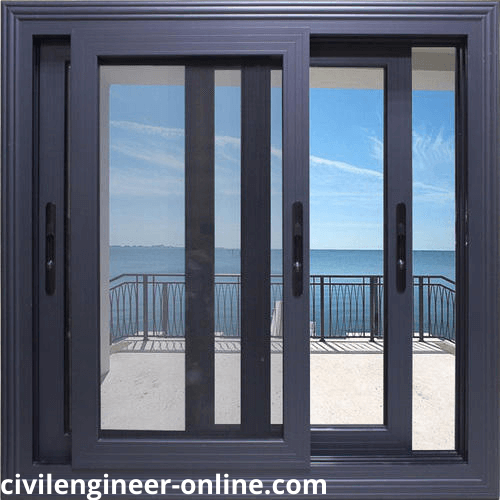
Engineering is a skilled practice of implementing science to the effective transformation for the advantage of a person of natural resources. To innovate helpful apps for artificial events, engineering, therefore, needs above all artistic fantasy. The whole method of organizational preparation and construction needs not only fantasy and concrete reasoning but also a strong understanding of structural design science in addition to an understanding of practical elements, such as the latest design codes and by-laws, supported by extensive experience, insight, and judgment. The purpose of standards is to ensure and enhance safety, keeping a careful balance between economy and safety.
The process of design commences with the planning of structure, primarily to meet its functional requirements. Initially, the client’s suggested specifications are drawn into account. They may be vague, ambiguous or even unacceptable from an engineering point of view because he is not aware of the various implications involved in the process of planning and the layout and organizational science constraints and intricacies.
It is emphasized that any structure to be constructed must satisfy the need efficiently for which it is intended and shall be durable for its desired lifespan.
Thus, the design of any structure is categorized into the following two main types.
(1) Functional design (2) Structural design
(1) Functional design
The framework to be built should mainly represent the fundamental objective for which it should be used and should sound pleasant. The house should provide both inside and outside a comfortable setting. The operational scheduling of construction must, therefore, bring into consideration the correct provisions of the rooms/halls to meet the customer’s needs, excellent ventilation, lighting, acoustics, unhindered vision in the event of public cinema theaters, etc.., sufficient headroom, proper water supply, and drainage arrangements, planting of trees, etc. bearing all these aspects in mind, the architect/engineer (i.e. designer) has to decide whether it should be a load-bearing structure or R.C.C framed structure or a steel structure. Read More
(2) Structural design
Once the form of structure is selected the structural design process starts. Structural design is an art and science that knows concrete load-bearing behavioral components and designs them with economy and dignity to provide a secure, serviceable and lasting framework.
The principal elements of an R.C. building frame consist of:
- Slabs to cover a large area
- Beams to support slabs and walls
- Columns to support beams
- Footings to distribute concreted column loads over a large area of the supporting soil such that the bearing capacity of the soil is not exceeded.
In foundation soil, the load is transferred from slab to beam, from beam to column and then to the foundation and soil below it.
Table of Contents
Stages in Structural Design
The process of structural design involves the following stages:
- Structural Planning
- The action of Forces and Computation of Loads
- Methods of Analysis
- Member Design
- Detailing, Drawing, and Preparation of Schedules.
Structural Planning
After getting an architectural plan of the building, the structural planning of the building frame is done. This involves the determination of the following:
- Position and orientation of columns.
- The positioning of beams.
- Spanning of slabs.
- The layout of stairs.
- Selecting the proper type of footing.
The action of Forces and Computation of Loads
Primarily it is necessary to have a clear concept of the action of forces acting on the structure.
Basic structural actions
A structure is subjected to the following types of basic structural actions:
- Axial force action
- Bending action
- Shear action
- Twisting action
- Combined action.
Analysis of Structure
The different approaches to structural analysis are (1) Elastic analysis (2) Limit analysis
- The elastic analysis is used in the design method of working stress.
- The limit analysis is further bifurcated as the Plastic Theory applied to steel structures and the ultimate load design method, and its modified version, namely the Limit State Method of RC structures, which includes the design for the ultimate limit state in which the ultimate load theory applies and in-service state elastic theory is used.
Member Design
The design of the member consists of a slab, beam, column and footing design. Once the fundamental theory of the limit state method is understood, these are undertaken.
Detailing, Drawing, And Preparation Of Schedule
The detail is an evolutionary process based on a comprehension of structural behavior and material properties. The good detailing ensures that the structure acts as designed and due to excessive cracking should not marginalize the appearance of the exposed surface. The skillful detailing will assure satisfactory behavior and adequate strength of structural members.
Design Philosophies
Reinforced concrete structures can be designed by using one of the following design philosophies.
- Working Stress Method(WSM)
- Limit State Method (LSM)
Properties of Concrete
- Grade of Concrete
- Compressive strength
- Modulus of Elasticity
- Poisson’s Ratio
- Creep
- Shrinkage
- Durability
- Unit weight of concrete
Properties of Reinforcing Steel
Reinforcing steel is known by its grade, and reinforcement, consisting usually of round bars, is known by the type of bar.
- Grade of Steel:
Grade of steel is known by its characteristic yield strength and is designed as Fe250, Fe415 and Fe500 where Fe stands for ferrous metal and the number following it represents guaranteed yield strength in N/mm2.
- Type of Bars:
Bars used as reinforcement in R.C. construction are available in the following types:
- Plain round bars of mild steel
- High yield strength Deformed (HYSD) bars.
HYSD bars have ribs, lugs on their surfaces. They are manufactured by the process of hot rolling followed by a suitable method of cooling and/or cold working.






